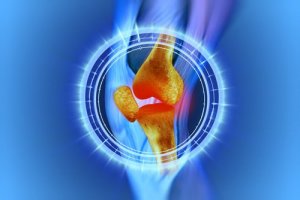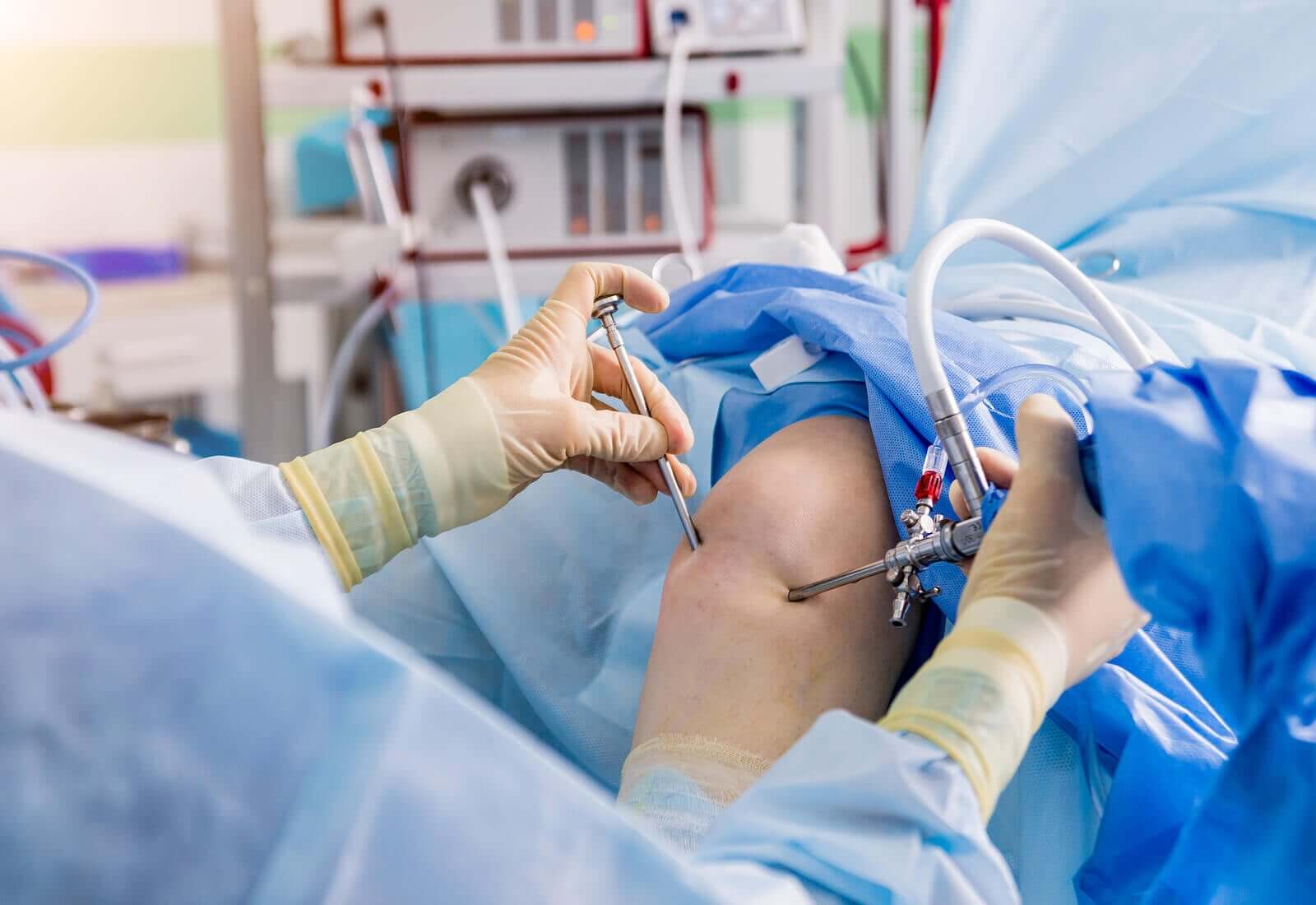Knee Rehabilitation after a Meniscus Operation

Knee rehabilitation after a meniscus operation is a process that may be extended for a few weeks depending on the patient’s health and the type of injury they have. Its main objective is to help regain functionality of the joint because the articular cartilage must adapt to life without the meniscus.
This period is quite important for athletes because it allows them to resume their athletic activity without having difficulties. In addition, it plays a key role when it comes to recovering the tone and muscle strength, which prevents the development of complications or new lesions.
It’s normal for patients to have some questions before you staring this phase of treatment. That’s why, in order to clarify what it’s about and when it starts, you should thoroughly review its most relevant aspects.
Why do Injuries Occur in the Meniscus?
The meniscus is fibrocartilage that’s located between the femur and tibia. It’s what provides the knee with flexibility and rotation. It helps stabilize the joint and facilitates the correct distribution of body weight.
The most common meniscal injury is caused by turning movements or bad support. However, it can also be the result of a degenerative condition that gets worse over time.
Read this article, too:Strengthen Cartilage and Ligaments the Natural Way
What does a meniscus operation involve?

Surgical methods involving the knee have evolved with the passage of time. Although it’s done by performing open surgeries, it’s more common to perform the operation through an arthroscopy, which is part of the techniques that are classified as “minimally invasive.”
This modern procedure decreases the risk of infection by up to 50 % and allows a more rapid recovery. As for its implementation, the doctor uses local or spinal anesthesia and makes an incision in the knee. Then, they make the insertion of an arthroscope.
This surgical instrument, which is about the size of a pencil, allows the physician to know the extent of injury through a small camera. Once they recognize it, the professional then uses other elements of surgery to remove or repair the damaged area of the meniscus.
What’s the purpose of knee rehabilitation?
Considering that the knee is a complex and delicate structure, it’s essential to consider a full rehabilitation process after performing a meniscus operation. Ignoring this recovery leaves the joint exposed to new lesions.
In general, the objectives of the rehabilitation process of the knee are to:
- Stimulate the blood flow to accelerate the recovery process.
- Relieve joint stiffness that occurs as a side effect of immobilization.
- Prevent atrophy and weakening of the muscles affected by inactivity.
Check out: Nine Foods that May Help Reduce Your Risk of Thrombosis and Stroke
When to Start Rehabilitation
Knee rehabilitation after a meniscus surgery should begin immediately. In fact, as soon as the intervention ends, it’s essential to apply some exercises and care that are determining factors for recovery. Knee exercises must begin 24 hours after the procedure.
Rehabilitation plan after a meniscus operation
After being subjected to an intervention, as is the case of the arthroscopy, it’s essential to follow through with a rehabilitation plan for the joint. This complementary treatment must be performed progressively, depending on the characteristics and evolution of each patient.
Likewise, these aspects have a lot to do with the time that’s required for the rehabilitation of the meniscus. Therefore, when it comes to an internal meniscus, rehabilitation can last for 3 or 5 weeks. However, the rehabilitation can be extended by 7 weeks if it is the external meniscus.
Care After Surgery
The first steps for knee rehabilitation start just right after the operation. This is a series of cares and habits that make it possible to reduce the inflammation before attempting to recover the mobility of the joint. These include:
- Keeping the knee elevated
- Icing the affected area
- Using analgesic and anti-inflammatory medications to relieve pain
- Using crutches to avoid supporting all the weight on the operated knee.
Rehabilitation Exercises
A large part of knee rehabilitation occurs with the exercises that are performed under the supervision of a physiotherapist. These activities are intended to heal the knee and help resume the activities that were interrupted by the injury.
When performing the treatment, it’s important to consider several aspects:
- An exercise program should be accompanied with other therapeutic and preventive measures.
- Activities need to be adapted to the type of injury and operation that was performed.
- The training routine must go through a series of stages where it’s not possible to move forward without first meeting a number of objectives. Thus, each of these phases will have to be personalized depending on the age, physical condition, and possible illnesses of the patient.
- Finally, it will take many weeks before the patient can perform high-intensity workouts. During the first 6 weeks, the patient won’t be able to crawl, go into a squatting or kneeling position.
As mentioned earlier, the rehabilitation period varies in each patient. A doctor should consider that not all patients respond the same to the exercises and established therapies. However, it’s certain that the recovery is much shorter when it’s an arthroscopic process and not a conventional surgery.
All cited sources were thoroughly reviewed by our team to ensure their quality, reliability, currency, and validity. The bibliography of this article was considered reliable and of academic or scientific accuracy.
-
Barber, F. A. (1994). Accelerated rehabilitation for meniscus repairs. Arthroscopy: The Journal of Arthroscopic & Related Surgery, 10(2), 206-210.
-
Barber, F. A., & Click, S. D. (1997). Meniscus repair rehabilitation with concurrent anterior cruciate reconstruction. Arthroscopy: The Journal of Arthroscopic & Related Surgery, 13(4), 433-437.
-
Shelbourne, K. D., Patel, D. V., Adsit, W. S., & Porter, D. A. (1996). Rehabilitation after meniscal repair. Clinics in sports medicine, 15(3), 595-612.
This text is provided for informational purposes only and does not replace consultation with a professional. If in doubt, consult your specialist.








